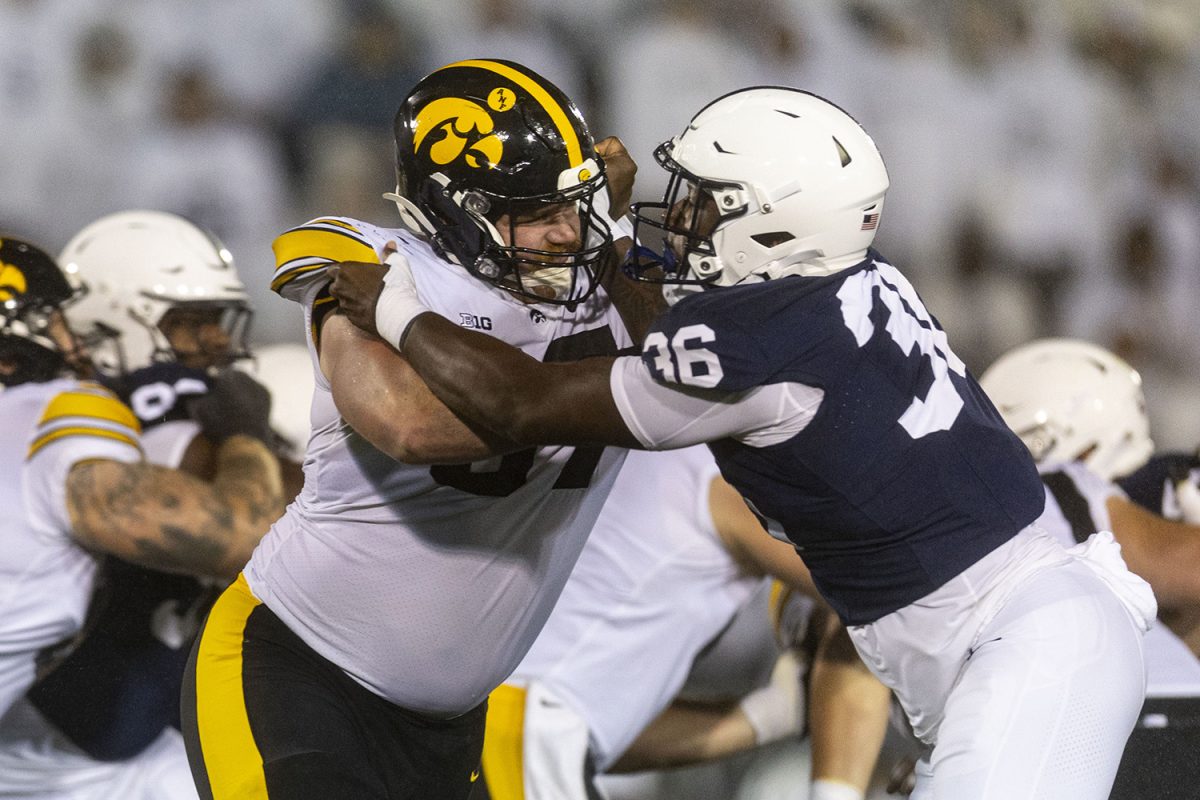One of the biggest moves this offseason was Alabama offensive tackle Kadyn Proctor transferring to Iowa, and then changing his mind.
On March 19, a day before spring practice started, it was announced the five-star prospect would not suit up for the Hawkeyes this fall and would enter his name in the transfer portal when it opened on April 16. Transfers are up almost 20 percent among FBS scholarship players from this time last year, per The Athletic.
Proctor entered the portal with a “do not contact” tag and is headed back to Alabama, On3Sports announced. The rules limiting players to one transfer with immediate eligibility have been suspended since December, so Proctor can play right away for the Crimson Tide.
According to 247Sports, Proctor went on spring break vacation with his former teammates from Alabama. Soon after, he removed himself from an Iowa team group chat and informed Kirk Ferentz of his intentions to leave the program. The article states he thought about leaving weeks before going on spring break.
“I think the bottom line here is that you don’t want a player in the program that doesn’t want to be here,” Ferentz said. “That’s always kind of been our feeling, and in my mind at least it’s best for both parties to go separate ways at that point.”
What does Proctor’s departure mean for Iowa?
The starting O-line is going to look almost, if not identical, to last year’s front seven. Since Proctor left before the first spring practice, he hadn’t taken any reps with the team, so it’s not like he was already settled into a starting position and the line now must learn how to execute without him. Proctor may be more athletic than Iowa’s starters, but the Hawkeye line has more experience.
Returning for the Hawkeyes up front is three-year starting left tackle Mason Richman, left guard Nick DeJong, center Logan Jones, right guard Connor Colby, and right tackle Gennings Dunker.
Joining that group is Beau Stephens, who started 10 games at right guard in 2022 but missed some time with a knee injury last year, and Tyler Elsbury, a fifth-year who has appeared in 37 games during his time in Iowa City. Ferentz said on March 26 Jones is out right now rehabbing from surgery, so Elsbury is working more at the center position.
“It’s going to be the five best guys out there, and we’ll figure out the equation, whether that works, how they are going to line up, and just let the guys compete,” Ferentz said. “It’s March right now, so who knows what it’s going to look like in August, but a bigger pool of experienced guys that hopefully are more confident. I think they will be more confident and more proficient at what they’re doing.”
DeJong said Tim Lester, who’s in his first few months as offensive coordinator, brings an “infectious energy” to practice every day that makes it easy for players to want to come in and get better. Along with that infectious, positive energy, Lester is deemed as demanding, but in a good way.
In terms of fundamentals, players said nothing on the offensive side of the ball has changed since Lester arrived. Instead, it’s the way plays are run that has differed. A recurring theme from DeJong and other offensive players at spring media availability was the increase in pre-snap motion and shots downfield.
DeJong said learning the new offense has been challenging at times, but he thinks his unit has picked up on Lester’s playbook faster because of their veteran experience.
“If you look at some NFL offenses in terms of, you know, how they run those things, I think that’s where things are a little bit different,” Dejong said. “Because you ask, ‘Are you still running outside zone?’ Yes. ‘Are you still running inside zone?’ Yes. I mean, it’s just the way that it’s run I think is where they could have changed.”
Ferentz cites lack of NIL structure
Ferentz said after coaching for over two decades, nothing surprises him anymore, especially in this new era of college football with NIL and the transfer portal.
The longest-tenured head coach in FBS said he doesn’t know if the current NIL landscape is sustainable because there is little to no structure.
The NCAA has tried to prevent recruits from getting paid to go to a specific school, but lawsuits across America have challenged that. When Proctor switched his commitment from Iowa to Alabama a day before signing day in December 2022, it was assumed by many his decision was influenced by the amount of NIL money the Crimson Tide offered him.
Proctor told HawkCentral there was money involved, but he didn’t say how much and added it wasn’t the reason he flipped his commitment.
On Feb. 23, a federal judge barred the NCAA from enforcing its rules prohibiting name, image, and likeness compensation for recruits by granting a preliminary injunction demanded by the states of Tennessee and Virginia, according to the Associated Press.
Ferentz said he thinks Proctor leaving at this point in the season is “probably a byproduct of that [freedom] lawsuit.”
“At some point, we’re going to have to be able to have a framework and a mode of operation. It’s just part of the business, I guess,” Ferentz said. “Fortunately, we haven’t experienced too many of those types of things.”



